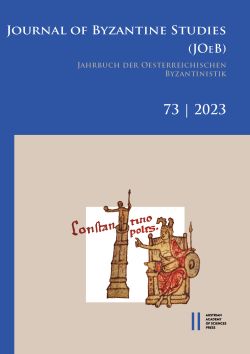
Jahrbuch der Österreichischen Byzantinistik 73, pp. 89-110, 2024/03/06
In this article I examine an epigram by Theodore Prodromos, which was recently found inscribed on an early fourteenth- century fresco of the Deposition in the private church of Agios Georgios at Kato Potamia, Naxos. The epigram is composed in iambic dodecasyllables and has been identified with the first poem in his well-known collection of epigrams on the Old and New Testaments, the Tetrasticha, where it is entitled Eis tēn apokathēlōsin (On the Deposition) (Tetr. 262a). I discuss the intimate relationship between the imagery of the epigram and Byzantine scenes of the Deposition, something that most probably shows that Prodromos was familiar with the contemporary iconography of the scene. The analysis of its reproduction on the fourteenth-century fresco at Potamia—a composition largely based on the middle-Byzantine iconographic tradition for this scene—shows that Tetr. 262a was in this case most probably treated as a purely prose inscription, closely associated with its protagonist Nicodemus and his actions in the event. Its focus on a secondary character, who is depicted performing a practical task in the scenes of Deposition, probably explains its unparalleled appearance in this small church on Naxos. Finally, I discuss the possible routes that could have brought the Tetr. 262a to the island and I conclude that this epigram is likely to have reached Naxos together with the specific variant of the scene from a model book, which was largely based on middle Byzantine imagery and texts.
Keywords: Theodore Prodromos; Epigram; Tetrasticha; Monumental Painting; Deposition; Nicodemus; Secondary Characters; Transmission of Epigrams; Naxos